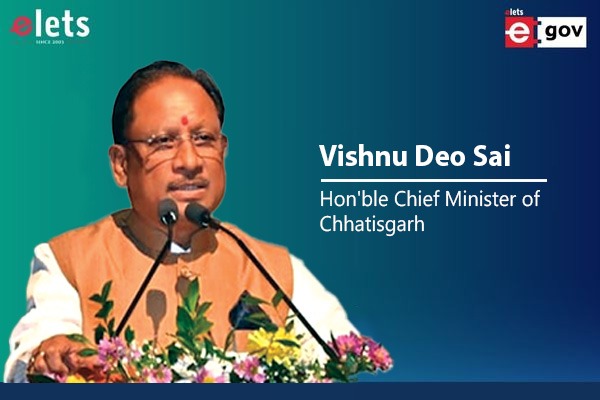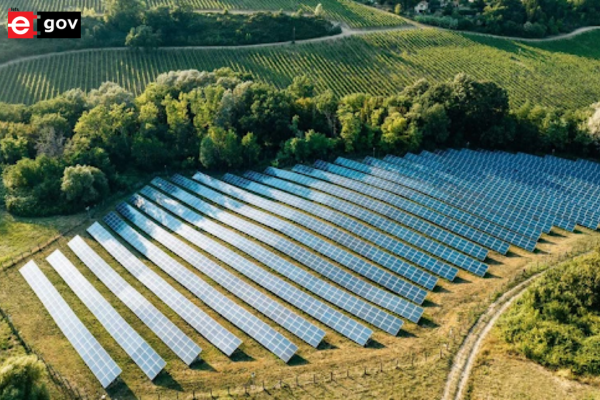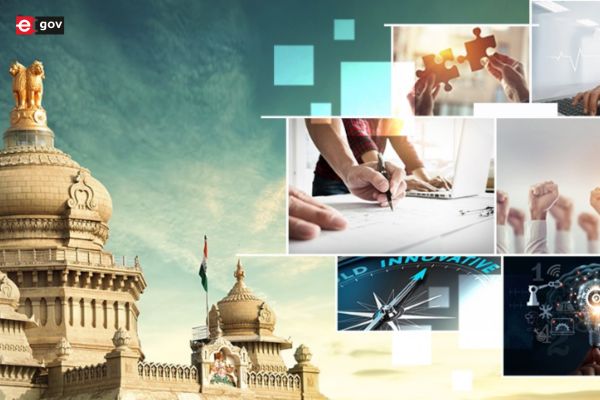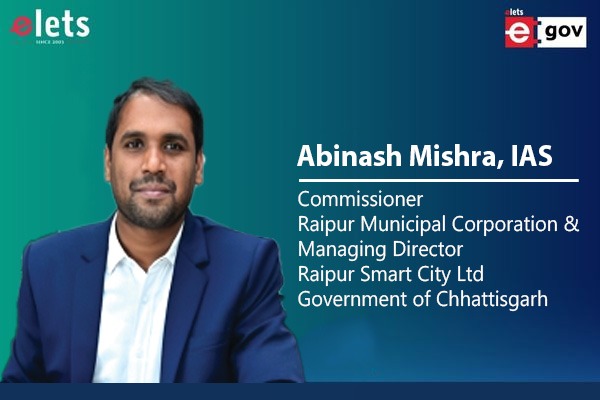Curb revenue leakages —as high as 35 percent in some states—and electrify all of rural India by 2012
The recent decade or so has witnessed tremendous growth in several key sectors of the Indian economy. As the world’s largest democracy continues to march along, there is a clear and urgent need to address the challenges for sustained growth. One of the key areas requiring attention is the ability of the government to deliver quality and reliable public services to citizens in a manner that is efficient and transparent.

More recently, information technology has been playing a key role in transforming businesses. Corporations around the world are embracing IT with an objective to reduce cost, increase productivity, streamline operations, improve customer service and gain a competitive advantage. The enabling of government functions using technology is gaining importance through the concept of e-Governance.

The growth of the power industry bears a strong correlation with the growth of the economy. For a target GDP growth rate of 8 – 10 percent, the power industry needs to grow by nearly a similar margin. India’s energy requirement 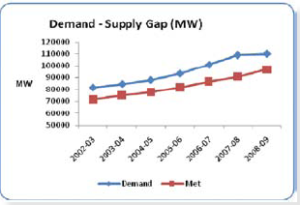 by 2030 is projected to be nearly six times of what it currently is. A lack of focus on the distribution side over the years has resulted in energy losses as high as 35 percent in several states whereas the world average is about 10 percent. These two eGov tAsKs At hAnD Curb revenue leakages—as high as 35 percent in some states—and electrify all of rural India by 2012 special feature sPANCo By Vidur sehgal issues when considered along with the fact that power is the enabler for all industries point to the need for this sector to be a key thrust area for major e-Governance initiatives.
by 2030 is projected to be nearly six times of what it currently is. A lack of focus on the distribution side over the years has resulted in energy losses as high as 35 percent in several states whereas the world average is about 10 percent. These two eGov tAsKs At hAnD Curb revenue leakages—as high as 35 percent in some states—and electrify all of rural India by 2012 special feature sPANCo By Vidur sehgal issues when considered along with the fact that power is the enabler for all industries point to the need for this sector to be a key thrust area for major e-Governance initiatives.

Government policies and reforms can have a positive impact on any sector of the economy. An analysis of the telecom sector shows how the opening up of the sector to private players has led to increased competition, reduced tariffs and improvement in service. The power sector too is in the process of undergoing structural changes driven by reforms. The ecosystem of the sector is going through a phase of transition and is seeing the introduction of several companies with different capabilities.

Opportunities for e-Governance are present in the distribution segment. The
distribution utility has been evolving over the years from manual processes to standalone IT applications. e-Governance can take this a step forward by transforming the utility into a customer-centric organisation.
Growth and Reforms
Availability of power is one of the most important ingredients for industrial growth. It is an important infrastructure facility without which no industrial activity can be thought of in modern times.
Thermal, hydro and nuclear are three major sources of power generation. Installed capacity has increased from just 1,362 MW in 1947 to 97,000 MW in March 2000, and has crossed 150,000 MW at the end of June 2009. India has become the sixth largest producer and consumer of electricity in the world, equalling the capacities of UK and France combined. The number of consumers connected to Indian power grids exceeds 75 million. The total length of transmission and distribution lines is 6.6 million circuit km (cKm)—the third largest in the world, as per Investment Commission of India. It is estimated that India will need 315 -335 GW by 2017 and 800 GW of power by 2030.
The government has set a target to add an installed apacity of 90,000 MW during the 11th Plan (2007-12). This growing demand for power has worsened the demand supply gap over the years. It has reached a level where peak deficit of power is 13 percent. To overcome this, India’s energy sector will require an investment of US$ 120 billion to US$ 150 billion over the next five years and around US$ 600 billion over the next ten years.
Two key considerations, apart from the growing demand supply deficit, are:
l. High aggregate technical & commercial (AT&C) losses
2. Low penetration of electricity in rural areas
AT&C losses are losses that occur during transmission and distribution of electricity. These are due to technical losses, unmetered or unbilled supplies, theft or pilferage.
These losses are as high as 35 percent in some of the states. To curb these losses, the Accelerated Power Distribution and Reforms Program (APDRP) was introduced during the 10th Plan. The program is scheduled to continue during the 11th plan as the Restructured-APDRP (R-APDRP). The government has allocated Rs. 50,000 crore under this scheme with the primary objective of reducing AT&C losses.
Government of India has proposed R-APDRP program as a central sector scheme. The focus of the program will be on actual, demonstrable performance in terms of sustainedloss reduction. Establishment of reliable and automated systems for sustained collection of accurate base line data, and the adoption of information technology in the areas of metering, billing, energy accounting and customer care will be essential
Franchise model for Power Distribution
To bring in efficiency in the distribution sector, the act has provision for:
(A) Open Acess :
There is a non discriminatory provision for use of transmission lines, distribution system and associated facility by any consumer or the licensee to wheel power from any available source to the desired destination for its use.
(b) Distribution Franchisee:
There can be appointment of a person or a body corporate authorised by distribution licensee to distribute electricity on its behalf in the designated area within his area of supply.
(C) Parallel Distribution Licensee:
The regulatory commission can appoint a second licensee in any specified area provided the new licensee is ready to create a separate distribution network to evacuate power for consumers in that area.
Input-based distribution franchisee model
The franchisee and utility need to enter into a commercial contract with an objective to establish the following:
• undertake all commercial activities relating to issue of new service connections, metering, billing, collection, disconnection, reconnections and customer complaint handling within the franchise area.
• undertake all investments that might be required to enhance the operations or meet the specified standards of performance of the distribution business within the franchise area.
• The franchisee will be the link for utility and users association at the local level.
ICT Driven e-Governance in Power
As a result of recent reforms, the Indian power sector is witnessing a massive transformation vis-à-vis restructuring, open markets, power trading and  privatisation. This has led utilities to lose their monopoly status. Independent power producers (IPPs) are entering into generation, Transmission is attracting private players, distribution franchisees are being introduced and power trading is becoming a distinct activity. In this changing market structure, the use of information and communication technologies (ICT) will become the main source of competitive advantage.
privatisation. This has led utilities to lose their monopoly status. Independent power producers (IPPs) are entering into generation, Transmission is attracting private players, distribution franchisees are being introduced and power trading is becoming a distinct activity. In this changing market structure, the use of information and communication technologies (ICT) will become the main source of competitive advantage.
state electricity utilities are currently using several standalone IT applications with very low levels of integration. The entire operational processes of the utility can be characterised as manual and cumbersome. The AT&C losses are as high as 40 percent in some states, with the prime reason being theft. It is difficult to precisely find the points of leakage in the absence of proper metering and reporting
infrastructure.
IT and telecom systems are expected to revolutionise the way distribution utilities conduct business by increasing employee efficiency, improving customer service, reducing losses and decreasing operating costs. These are the key objectives of e-Governance.
Spanco in Power sector
spanco has been associated with modernization of key sectors. we started as a Telecom system Integrator and have in the last 15 years diversified into several areas. Power has been a focus area and we have developed innovative, cost effective solutions to address the needs of the power sector. spanco has been empanelled as system integrator by the Central Government for its ambitious rs 50,000-crore r-APDrP program.
we are currently executing the rAPDrP project for state of Punjab and Chandigarh (uT). we have also been declared as highest bidder for Power Distribution Franchise tender for Nagpur. with our expertise of using information technology to create efficiency in power distribution, we are well poised to build robust, scalable systems for state Electricity boards.
our solutions are focussed around creating agile, customer centric utility which can benefit from the power of information technology.
Be a part of Elets Collaborative Initiatives. Join Us for Upcoming Events and explore business opportunities. Like us on Facebook , connect with us on LinkedIn and follow us on Twitter, Instagram.
"Exciting news! Elets technomedia is now on WhatsApp Channels Subscribe today by clicking the link and stay updated with the latest insights!" Click here!







